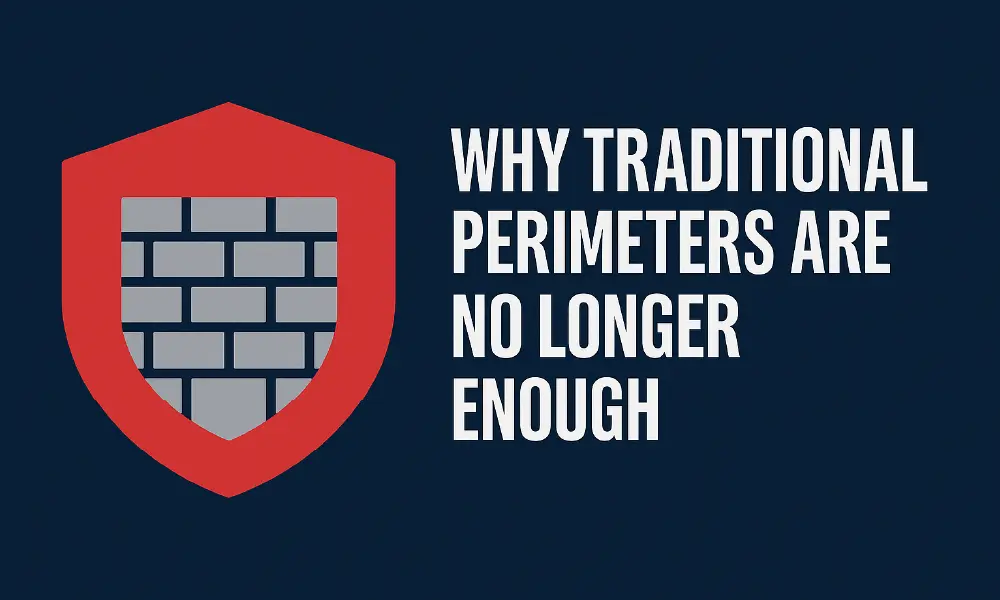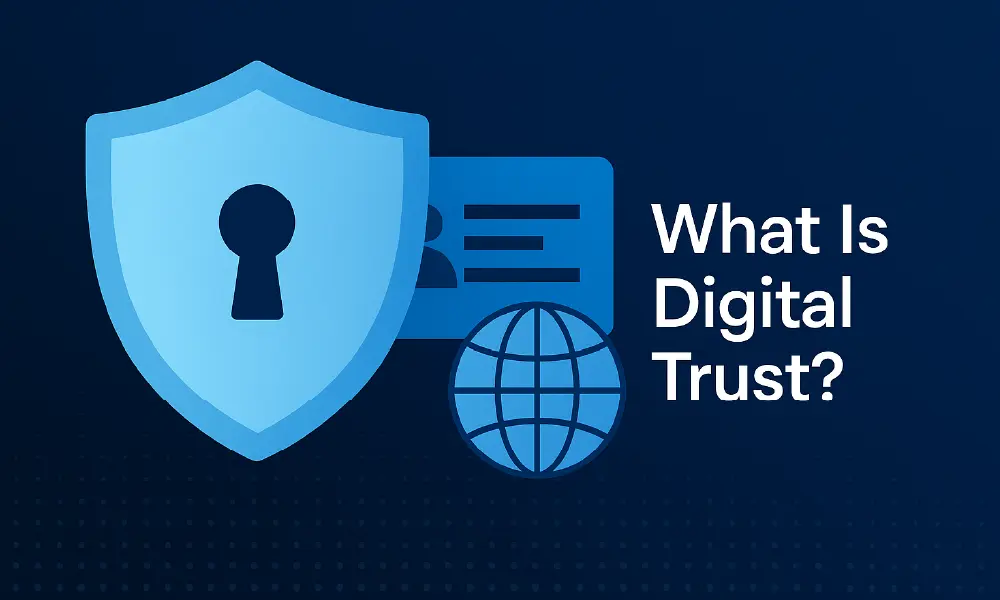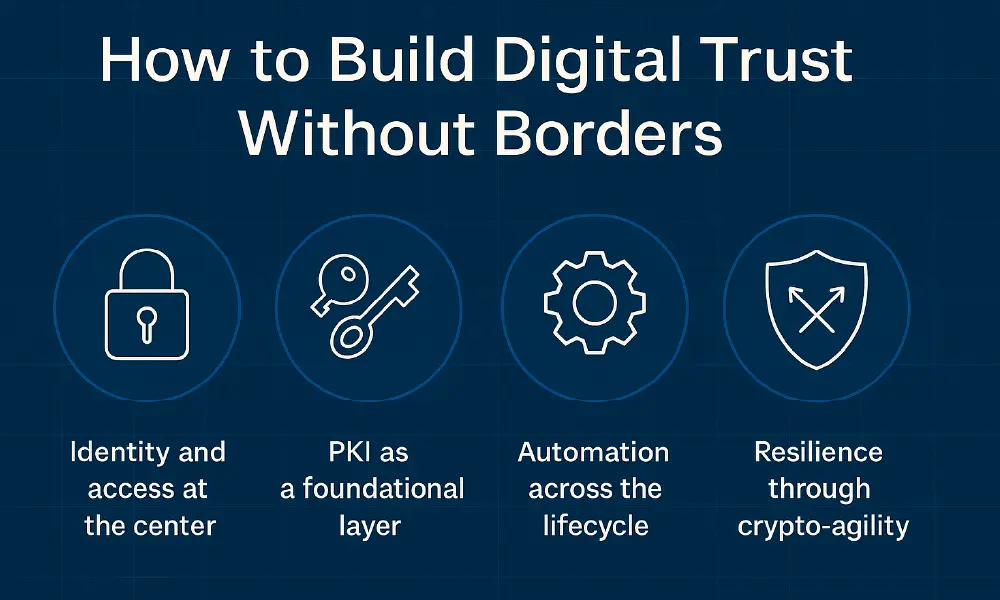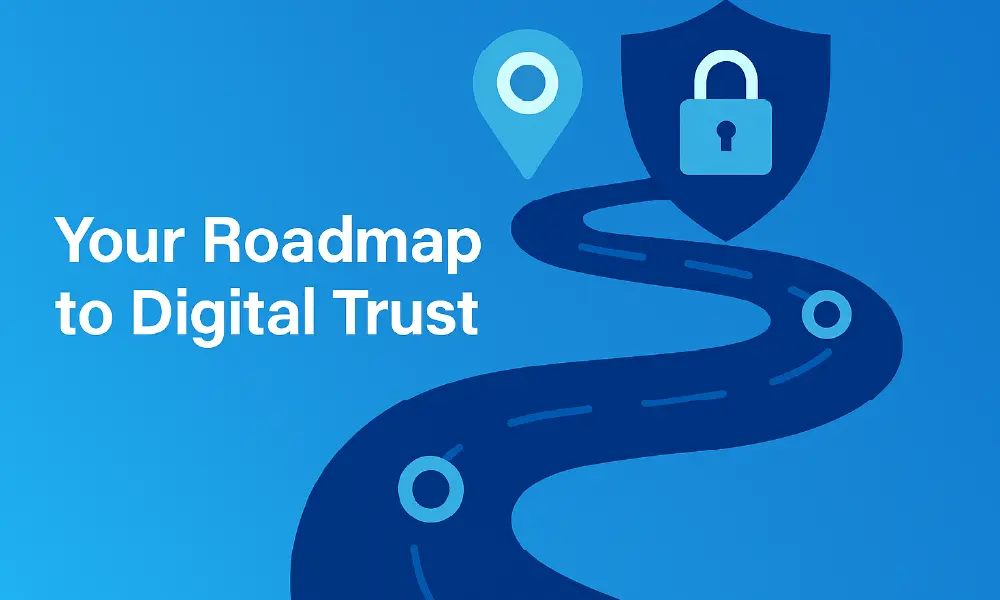What happens when your network has no edge? This is no longer a theoretical question. Today’s digital environment is defined by decentralization: employees work from anywhere, cloud platforms manage critical data, and SaaS tools power daily operations. The traditional network perimeter is fading fast—but many security models haven’t caught up.
To build true digital trust, organizations must rethink how and where security is enforced.

Why Traditional Perimeters Are No Longer Enough
In the past, cybersecurity was largely about protecting the “edge”—using firewalls, VPNs, and physical restrictions to keep bad actors out. But the edge has dissolved. Teams work remotely, data is stored in the cloud, and software lives in third-party environments.
Key factors driving the erosion of the perimeter include:
- BYOD and mobile-first workforces: Employees access corporate systems using personal devices that often lie outside of IT’s direct control.
- Cloud-native infrastructure: Businesses are shifting from legacy data centers to dynamic, cloud-based environments.
- Global SaaS adoption: Business-critical tools now operate across geographies and networks, far beyond the reach of traditional defenses.
In this new environment, trust must be built not just at the edge—but across every digital interaction.

What Is Digital Trust?
Digital trust is the assurance that systems, data, and digital communications are secure, consistent, and reliable. It’s grounded in identity management, encryption, and access control—but it’s also about how well these are applied across your digital ecosystem.
A trustworthy system is:
- Resilient to new threats
- User-friendly in design
- Scalable across infrastructure, applications, and geographies
True digital trust doesn’t disrupt workflows—it supports them.

How to Build Digital Trust Without Borders
Security isn’t just about technology—it’s about mindset. In a perimeterless world, trust must be embedded into infrastructure from day one.
Here’s how modern organizations are taking that approach:
- Prioritize Identity and Access
Embrace zero-trust principles: never assume trust—verify it. That means implementing strong authentication protocols like:
- Certificate-based user/device authentication
- Multi-factor access control
- Continuous verification for all access points
- Use PKI as the Trust Backbone
Public Key Infrastructure (PKI) is a core component in managing identities and encrypting communications. It ensures devices, users, and systems can securely interact—even across hybrid or multi-cloud environments.
At WebNIC, we advocate for PKI not just as a tool, but as the foundation for establishing trust across modern infrastructure.
- Automate Certificate Management
Manually managing certificates is slow, error-prone, and risky. Automation helps to:
- Reduce outages from expired certs
- Enforce policy consistently
- Scale certificate issuance and renewal across dynamic environments
Automation also frees up IT teams to focus on strategy—not firefighting.
- Prepare for Quantum Threats with Crypto-Agility
Quantum computing will eventually challenge current cryptographic standards. A crypto-agile infrastructure allows you to:
- Transition to post-quantum cryptography (PQC) smoothly
- Support dual-algorithm certificates
- Maintain compliance and resilience without operational disruption

Why Digital Trust Matters to Business Leaders
Digital trust is not just an IT concern—it’s a strategic enabler. Companies that bake trust into their systems gain:
- Faster adoption of cloud and AI tools
- Better customer retention and reputation
- Fewer compliance incidents and security disruptions
In contrast, weak digital trust can erode user confidence, hinder innovation, and increase risk exposure.

Your Roadmap to Digital Trust
Start building your digital trust framework with these actions:
- Assess trust levels: Identify gaps in identity, encryption, and access control
- Map your digital dependencies: Understand which systems require stronger integration and visibility
- Invest in future-readiness: Adopt platforms that support PKI automation, crypto-agility, and scalable trust enforcement

Secure What’s Next with WebNIC
WebNIC supports organizations in building scalable, modern digital trust infrastructures. Through our range of security and certificate lifecycle solutions—including support for post quantum cryptography—we help you stay ahead of evolving threats.
Contact us today to learn how WebNIC can support your journey toward stronger, smarter digital trust.

